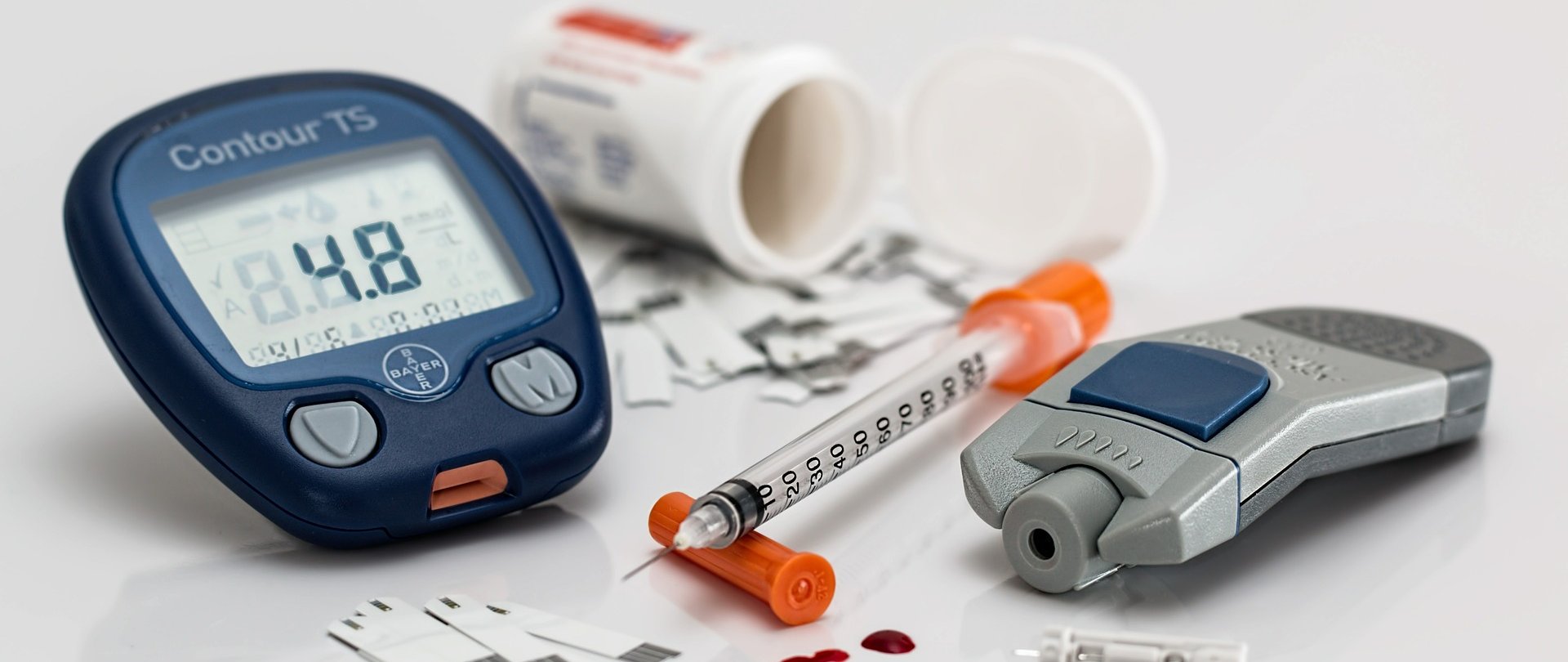Diabetes is not only a disease experienced by the elderly and the sick. How to avoid it?
Diabetes is a chronic condition caused by an insulin secretion disorder. It is characterized by an increased level of glucose in the blood (or hyperglycemia) and can lead to the failure of various organs and functional disorder – especially affecting the eyes, heart, kidneys, nerves and blood vessels.
The most common form is type 2 diabetes, previously known as non-insulin dependent diabetes, which is observed in up to 80% of patients. It is caused by impaired action and secretion of insulin. It most often develops in the obese, the elderly or those suffering from metabolic disorders. Type 1 diabetes is associated with a genuine lack of insulin due to the immune process. This type of disease is usually diagnosed in children and young adults.
How to recognize diabetes?
Symptoms of diabetes tend to be varied and depend on the type and stage of diagnosing the disease. Symptoms indicating type 1 diabetes, usually seen in young people, usually appear suddenly and may be associated with a feeling of increased thirst (patients drink up to several litres of fluid a day), frequent urination, fatigue, weakness and a significant reduction in body weight. (up to 10 kg or more over a month or two). Many people also experience visual disturbances, fungal and bacterial infections, muscle spasms or arrhythmias.
Type 2 diabetes does not have any visible symptoms for a long time, and patients often do not know about their condition. Its diagnosis is often only due to symptoms associated with the poor functioning of damaged internal organs. The symptoms that we should look out for include: recurrent fungal and bacterial infections, fatigue, weakness, frequent urination, strong thirst, and diseases of the small and large blood vessels.
Before it's too late...
Modern medicine has not found a drug to cure diabetes once and for all. Diabetes is therefore still an insidious and very dangerous illness that leads to health-related complications. All the more reason to focus on preventing the development of diabetes over time.
So what to do to minimize the risk in advance? Above all, make sure you eat a healthy diet and exercise regularly. Our meals should contain large amounts of vegetables and fruit, with low quantities of sweets and fats, especially for the animal variety. It’s good to know that vegetables and fruits contain so-called flavonoids (dyes and antioxidants) that stimulate insulin production and block the connection of glucose with proteins (glycation). Diabetes accelerates this process and results in faster cell ageing.
A healthy diet also means avoiding highly processed and caloric products, as well as stimulants – not everyone knows that each cigarette smoked can increase blood sugar levels, and a person who smokes a packet a day increases the risk of getting diabetes by as much as 60 %!
In the prevention of diabetes physical activity also plays a key role – exercising several times a week, regardless of whether we prefer running, aerobics or cycling, allows us to control body weight, fight overweight and obesity, and improve blood circulation and oxygenation of the body, which has a positive effect on the health.
In the fight against this disease, it is also worth treating yourself to a proven medical spa center for a few days, where specialists can design an individual program so that we can devote time for the benefit of our own health. In the treatment of diabetes, for example sulphide baths work very well – sulphides lower cholesterol and triglyceride levels. Such baths usually last for 5-15 minutes and are performed in water at a temperature of 33-38 degrees Celsius.
In order to avoid diabetes, we should also check our blood and blood pressure It is important to check the glucose level regularly, especially after the age of 45.
Diabetes has recently grown to the size of a pandemic – it is estimated that there are over 180 million diabetics around the world. The World Health Organization estimates that this figure will double by 2030. Late detection of the disease leads to patients suffering from serious complications of diabetes – they are diagnosed with, among others, strokes, coronary heart disease, vascular disease of the lower limbs, lipid disorders or renal failure. According to the principle that prevention is better than cure, now let’s put a healthy diet, and the evening sitting in front of the TV, let’s change for outdoor walks, gymnastics or cycling!




























